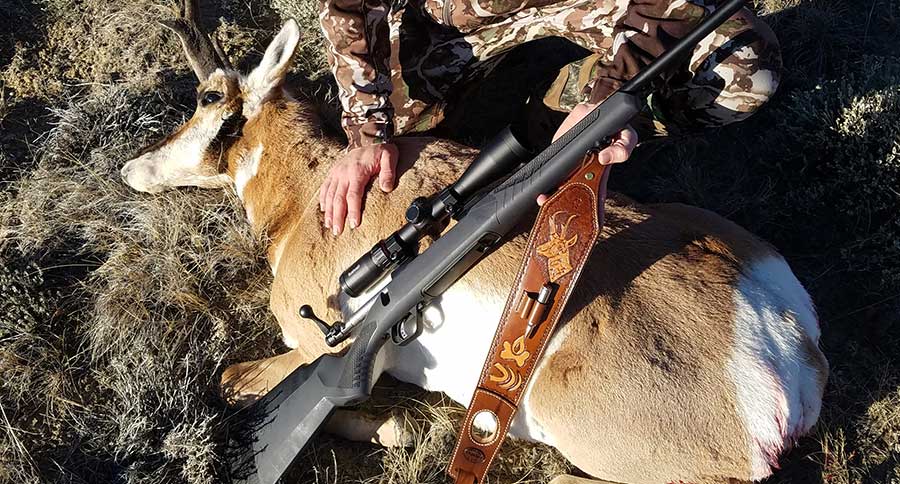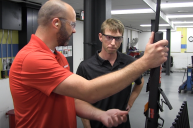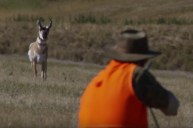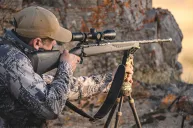A special opportunity to put together a rifle, then take it hunting pronghorn antelope in Wyoming, was a once-in-a-lifetime chance.
I've set some pretty reasonable goals to accomplish in my hunting exploits, none of which would be viewed as too lofty. It's not so much about a total number of species or a "one in every state" type of achievement I'm looking for. There are places I'd like to go just as much as there are hunts to complete, and when I can combine the two, all the better.
That's what stared me in the face when I learned of a unique and humbling opportunity to work with Savage Arms and create one of their Model 110 rifles in their factory. Not only that, but I'd get to then take the gun on a trip to the Wyoming prairie with folks Savage, Federal Ammunition, and a few other hosts. Our aim? A pronghorn harvest and a five-night stay on some private land near the tiny metropolis of Kaycee.
I signed on, and two goals I'd set for myself would begin to take shape. A pronghorn tag in Wyoming. It was almost too good to be true.
Gearing Up
I contemplated (for a long time, mind you) which Model 110 to go with, and had some of those further hunting goals in mind as I thought. Already outfitted with some of the less hefty calibers, I opted for a Model 110 Long Range Hunter in .300 Win Mag. In retrospect, it was probably a little too much gun for a pronghorn, but I don't want to get ahead of the story.
What's important is depicting how incredibly cool it is to put together your own gun.
The guys at the Savage factory in Westfield, Massachusetts walked me through every step of the process, and I got to get my hands dirty (in a sense) putting the trigger, bolt, and receiver together. I then watched as it was laser-etched for a complete customization experience. I got my last name and the year, not too inventive but I thought it was fitting.
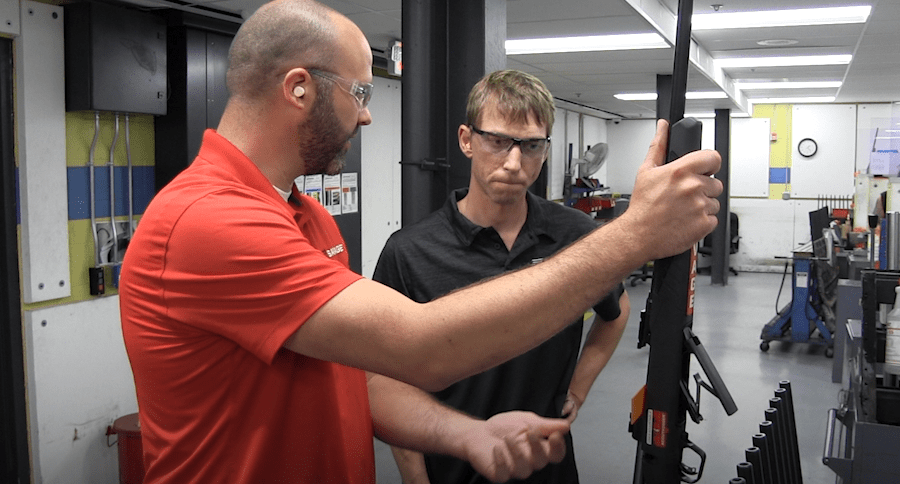
My friends JJ Reich and Jared Hinton, from Savage and Federal Premium, gave me the kind of access I know few get, and I could feel the importance of this firearm, being put together in front of my eyes.
The entire factory experience blew my mind, especially the test-firing process. I was hooked up with a Bushnell scope to top off the rifle, and in order to ensure it was all-systems go, I actually shot the gun several times into a test-fire tube which stretched over the top of the factory floor. A buzzer gave the workers below an audible warning to avoid startling them with the gunshot.
I had an absolute blast, learned a ton, and have even more respect for Savage after seeing how they run their business.
Antelope Camp
Fast forward a few months, and the anticipation's peaking. My 110 arrived at the dealer, and I'd reacquainted myself with it at the range. I thought about how long the gun would be with me. Would it still be around 30 years from now? Will it still be just as accurate? Will my grandkids ever get to shoot it? Where's it gonna go when I'm gone?
Without getting too sappy, I was liking the idea of having this gun, that I put together, for a long time. But I tried not to think too far past my first real hunt with it. The day was approaching.
The pronghorn in Wyoming were waiting.

I knew we'd be sleeping in tents on some private land, and have an expansive area to work with when it came to hunting. That was important in my mind, based on what I knew about pronghorn and their tendency towards speed. I pictured a lot of hiking and a lot of spooking.
That's the norm for the part of Wyoming's sage and grass-covered prairie we'd be on, but far from how it would work out for me.
Arrival at camp was incredible. The SpringBar Tents, which I'd come to learn were used by the Boy Scouts for western state camping trips since the 1960s, immediately blew me away. They were well-crafted wall tents I could tell were made to stand up to the worst. Our sleeping quarters, eating area, and kitchen was made entirely of SpringBar Tents.
Speaking of the kitchen, Camp Chef had set the group up with a huge array. We weren't exactly roughing it, but that just meant we were eating reverse-seared pronghorn backstraps cooked on a Pursuit 20 Pellet Grill.
I'll seriously never look at a pellet grill the same way after this trip, thanks to the expertise and amazing finishing touches our cook and Camp Chef representative Brooks Hansen put on our outstanding meals.
Not to knock any outfitter service I've had the pleasure of staying with and being fed by, but what Brooks put on my plate was beyond almost everything I've eaten on a hunt, and it was all prepared in or right outside a tent.

I rejoined JJ from Savage and Federal Premium, and he handed over a box of rifle cartridges with some black marker scrawled on it. Apparently the ammo was so new the packaging had yet to arrive, but he wanted me to try it.
As it turned out, the box was filled with the then-yet-to-be-announced Barnes TSX, or Triple Shock-X, the popular all-copper hollow point they stopped making years ago.
It was settled. I shot several at the makeshift range near camp, slipped a few into the custom leather sling Brooks had gifted all of us, and felt as ready as I'd ever be.
The First 30 Minutes
The first morning hunt was going to be early, but since we had so much land to ourselves, it didn't need to start before sun up.
Seven of us had tags, and my group of three would be on one parcel, with the others opposite a highway. Without trying I'd ended up with first shot, meaning I could have the first opportunity at a buck. It was just sort of handed to me. Little did I know.
As we loaded into a truck to put some ground between camp and where we'd start, Brooks sized me up for the question he was about to ask. Someone leaving camp had already noticed a buck bedded just a quick 400 yards or so away. Was I ready to get after it first thing?
You bet I was. We still hopped in the truck and cruised around a rise, staying out of sight of the buck for the time being. After five or six minutes we figured we'd gone far enough, and started on foot back towards the spot we'd last seen the snoozing pronghorn.
It was a matter of minutes until we'd see him again, still oblivious. My Bushnell binoculars told me the buck had a nice, tall set of horns, and my rangefinder read 179 yards. I got down to business.
Using my pack on the ground, I bellied up to the top of the rise and chambered a round.
The buck stood up.
I was urged to act fast, and started to feel the pressure you always hope to avoid.
With a full thumbs up and a quick acknowledgement, I fired.
The pronghorn instantly fell back where it was lying. It was that quick. I didn't see any movement, and took my eye away from the scope to glance at Brooks next to me. Then I noticed the look on his face.
The buck stood up. Again. After being shot.
I cycled the bolt and got another in the chamber, aimed carefully, and sent another.
That time he fell, and stayed down.

Seven Tags
As bad luck (or simply a bad shot, I'm still not sure) would have it, my first shot his the buck far back, close to the rear end. A "Texas heart shot" as a fellow camper so graciously called it, a good laugh I haven't heard until then or forgotten since.
And yes, the .300 Win Mag was a lot more gun than I needed, especially for that close of a shot. The Barnes TSX did its job though, and I know I have a gun for bigger game when the elk and moose hunts materialize. I'll definitely go with something smaller on my next pronghorn, but it won't be nearly as memorable.
I ended up ruining some of the meat, an overall small casualty when I look back at it and something I wasn't forced into feeling guilty for by the guys I was with. That could have turned out a lot differently, but I'm particularly thankful for the group of people who were put together for this trip; they had a big part in me getting over a poor shot.
I was still as proud as could be, and then began to realize the significance of this spot. Two more bucks were brought back to camp before the end of that first day, and all seven were filled within the five days we stayed.
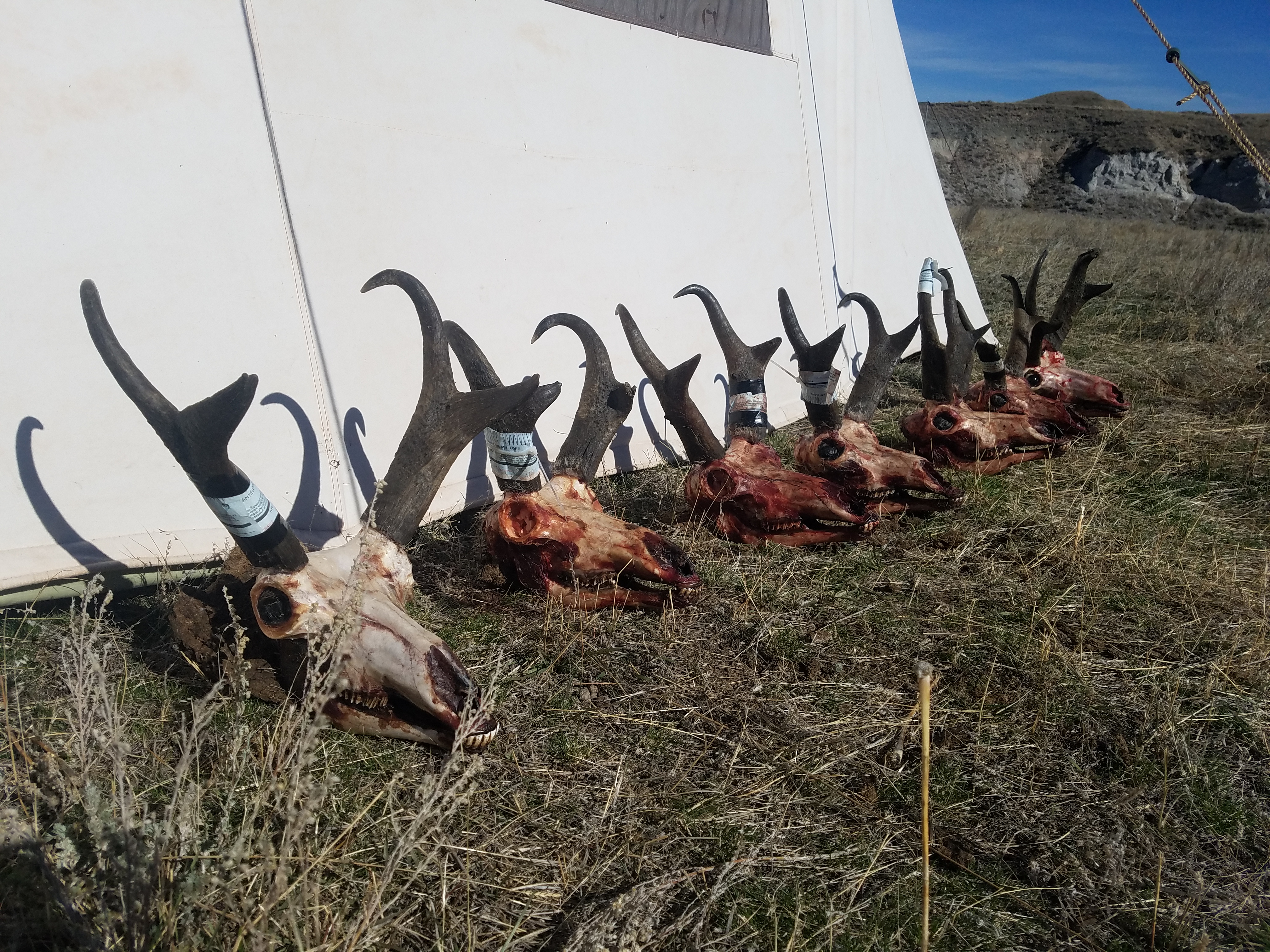
What's left when you fill your tag within the first 30 minutes of your hunt? Lucky for me, I was there with Federal Premium and Savage, so there was plenty. Specifically, a prairie dog situation that was in need of attention.
We were equipped us with countless boxes of Federal ammo and a few custom rifles with names and makes I can't even remember. I do remember a lot of dead prairie dogs, though.
The rest of my time in camp was occupied with a crash course in skull mount preparation, a mini curriculum in pellet grills and outdoor cooking, a healthy dose of photography and equipment talk, and all the scenic Wyoming landscape I could soak in.
I'm forever thankful for my first antelope hunt, and my first harvest with my gun. Here's to many more.
Here's one more look at the outcome, one I'm proud to have accomplished.
WE BUILT OUR OWN GUN AT THIS EXCLUSIVE SAVAGE GUN FACTORY TOUR
